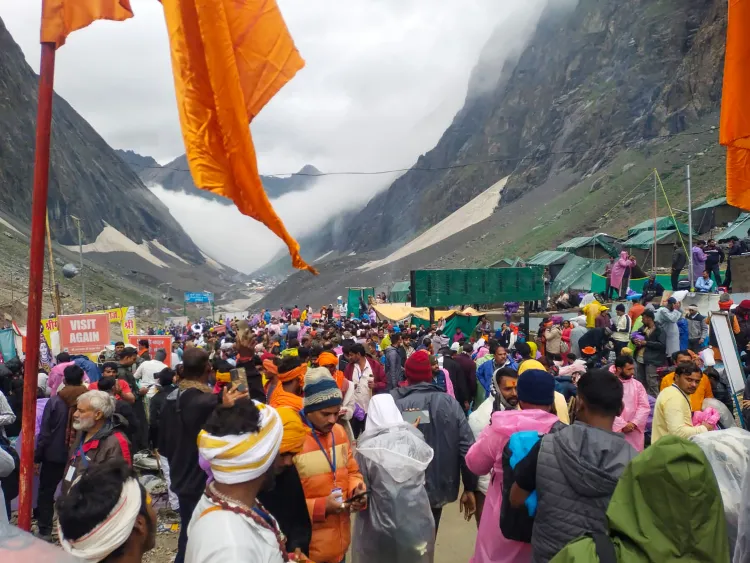Why Was the Amarnath Yatra Suspended Early?

Synopsis
Key Takeaways
- The Amarnath Yatra has been suspended due to adverse weather conditions.
- Approximately 400,000 pilgrims visited this year, despite a decline in recent weeks.
- Increased security measures were put in place following recent terror attacks.
- Both traditional routes are currently deemed unsafe for travel.
- The pilgrimage has deep historical roots and symbolizes cultural unity.
New Delhi, Aug 3 (NationPress) The annual Amarnath Yatra has been called off starting Sunday, almost a week before it was set to wrap up on August 9, which was planned to align with the Raksha Bandhan festival. Authorities have pointed to ongoing severe weather and the deteriorating state of the Yatra pathways as the key factors for this early suspension.
The pilgrimage had already faced a temporary halt three days prior due to significant rainfall in the area.
On Saturday, officials confirmed that the Yatra would not continue from either of the two customary routes, Baltal or Pahalgam, due to unsafe trail conditions and the urgent need for repairs.
According to Vijay Kumar Bidhuri, the Divisional Commissioner of Kashmir, the terrain has been severely compromised by recent downpours, making the routes perilous for the pilgrims. He mentioned that immediate repairs and maintenance were essential, and it was impractical to carry on with the Yatra while deploying personnel and machinery for those repairs.
Despite this early conclusion, approximately 400,000 pilgrims successfully visited the revered cave shrine this year, as reported by the Shri Amarnath Shrine Board. However, officials noted a significant drop in the number of visitors over the past week, likely due to weather-related interruptions.
This year’s Yatra saw heightened security measures following a major terror attack in Pahalgam on April 22. Over 600 additional paramilitary companies were deployed alongside existing forces, making it one of the most heavily secured pilgrimages in the nation.
Pilgrims were transported in closely monitored convoys from Jammu to the twin base camps, and civilian movement was restricted during convoy hours along the Srinagar-Jammu National Highway.
The Amarnath Yatra, which traces its origins to the cave's discovery in the 1850s by a Muslim shepherd named Bota Malik, has traditionally symbolized Kashmir’s blended culture.
Until 2005, the Malik family managed the pilgrimage before it was taken over by the Shri Amarnath Shrine Board. However, recent years have seen a decline in interaction between yatris and the local populace, as strict security measures have largely confined most pilgrims within heavily guarded areas. Locals observe that only those directly involved in the Yatra, like pony handlers and palanquin bearers, still maintain regular contact with the visitors.









